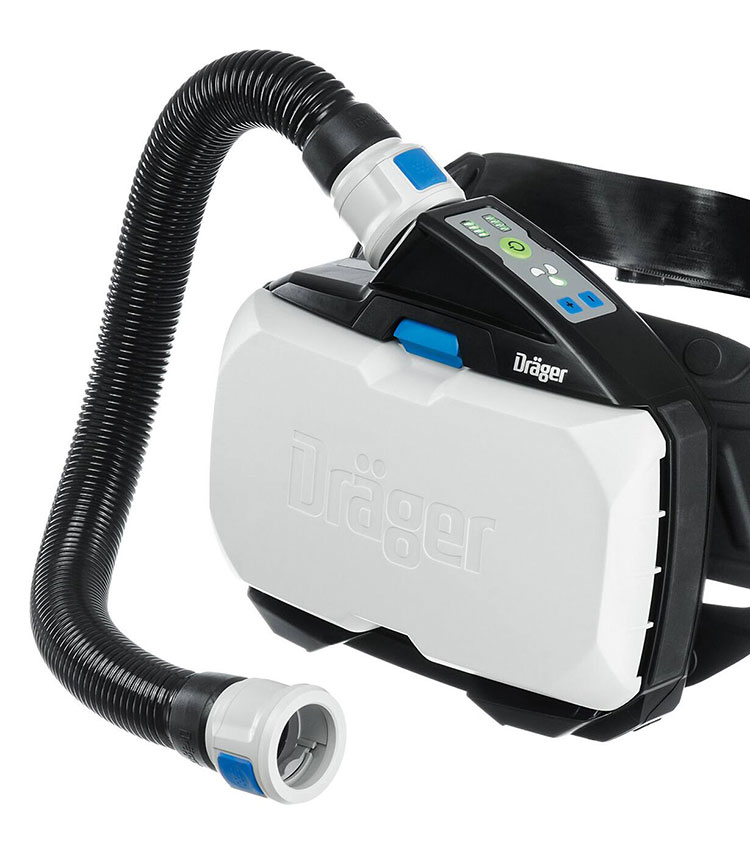Ten RPE Maintenance Tips:
1. Follow the manufacturer’s instructions closely when you clean your RPE, so that the cleaning process is thorough and hazard protection is not compromised.
2. Using disposable gloves to protect your hands from any hazardous substances during respirator maintenance is recommended.
3. Carefully disconnect all parts of the equipment, including mounting belts and hoods, ready for cleaning. Inspect all parts for damage. The Drager PAPR blower unit has coloured touchpoints which make it simple to take apart and put back together, but any unit should have instructions you can follow for dismantling.
4. Any damage needing repair should be passed to a fully competent technician.
5. All component parts should be cleaned using a soft cloth or disposable wipe with neutral detergent solution or RPE cleaner. Some parts can be rinsed using clean running water. Using the wrong cleaning products or methods can result in damage to the unit, this includes strong chemical cleaners or bleaches. The picture below shows the damage which can be caused over time. You can find the cleansing wipes recommended by Drager equipment here.
6. Do not try to clean the media inside the filter. If the filter is compromised by excess dirt, it should be replaced. See our Expert Insight on this filter maintenance here.
7. Do not allow water to enter any battery compartments if rinsing.
8. Finally, all components should be fully air dried in a decontaminated atmosphere, away from direct heat, before reassembling for further use.
9. Keeping a written record of all cleaning and maintenance of RPE is a good idea and will help with H&S audits.
10. Storage after cleaning: batteries and filters should be removed when the unit is out of use and it should be stored in a clean dry environment, away from direct heat sources.

This is an example of how using the wrong cleaning products for RPE maintenance can cause serious damage to the equipment over time.

Drager (also known as Draeger in some markets) units have clear blue touchpoints to show how they can be dismantled and put together easily.